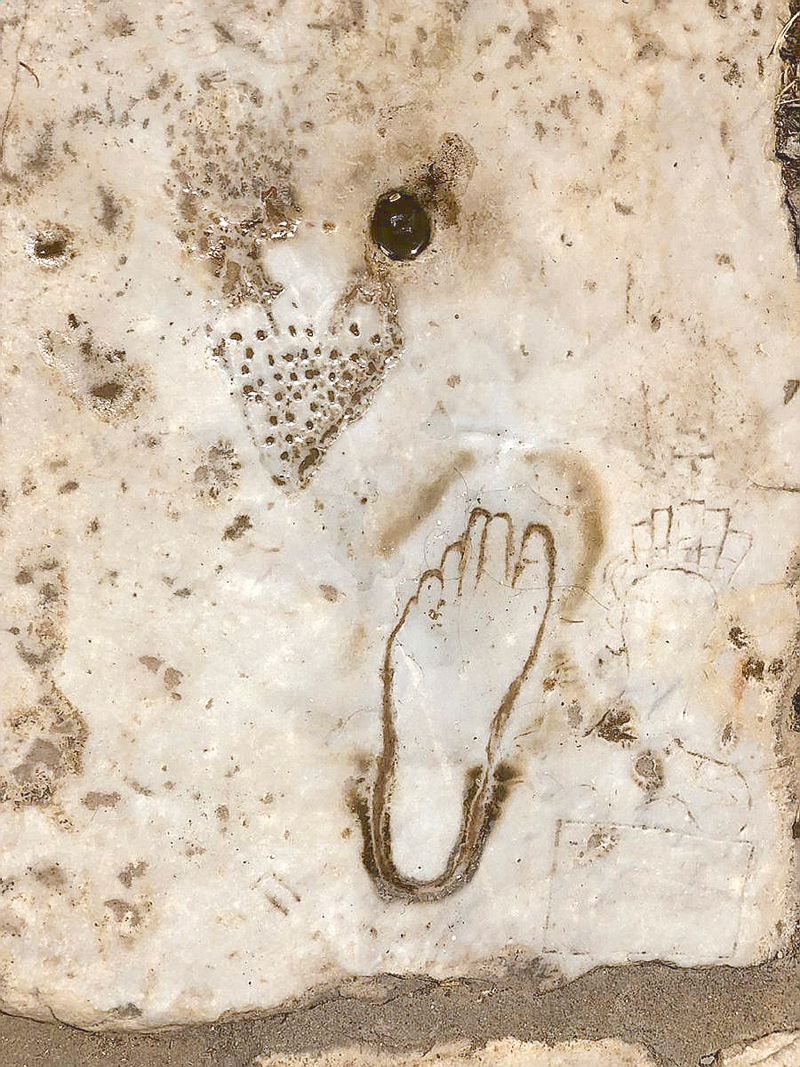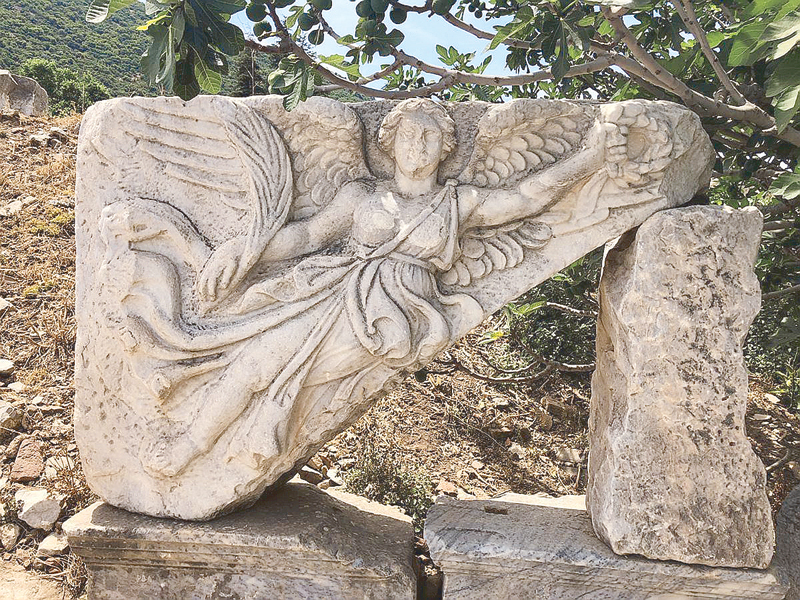Enamored with ephesus

MANILA, Philippines — After the hot air balloons of Cappadocia and the mighty Bosphorus in Istanbul, you wonder if Turkey has exhausted its wonders. Far from it!
The trade focus of the ancient world and the erstwhile religious nucleus of early Christianity, Ephesus, located just three kilometers from the town of Selçuk, has a population of 30,000 and is visited by millions each year.
Built in 10th Century BC, it may be considered one of the largest outdoor museums in the planet and was listed as a UNESCO World Heritage Site in 2015.
Our first stop in this archaeological jungle was the Odeon, a small formerly roofed theater which housed up to 1,500 people, often utilized as an assembly hall for the Senate and, at times, the salon for plays and concerts. With columns below and embellished red granite pillars at the upper levels, it gave us a peek into the life of politics and entertainment of the early civilization.

Hot air balloons in the skyline.
We soon found ourselves by the Arkadiane street, 530 meters long and 11 meters wide, with traces of shops and galleries on both sides, where we were mesmerized by well-preserved slabs and colonnades. The landing pad of sailors and traders, it was the key avenue to and from the now-receded seaport.
We were then led to the Curetes street, a manifestation of the grim effects of natural calamities. Destroyed by several earthquakes, the poles presently displayed along the walk have been replaced with other structures in the city. The observant ones noticed that the designs of the posts were different.
Down the road was the Memmius Monument, a reminder of the bloody conquest of Dictator Sulla – deemed a hero by the Romans – who led a revolt and brought security to its citizens. The figures of the father and son both stood the test of time.
Another interesting discovery was a marble carving of a prominent foot, beside faint images of a cross, a woman, a heart, a money purse and a hole in the middle of it all. The popular interpretation of what may be the oldest advertisement ever was that if your foot was a perfect fit with the engraved one, and you had coins to fill the pit, you are qualified to enter the brothel. If not, there was a suggestion to please proceed to the library and read books. Joke or otherwise, we will never know.
Keeping our eyes peeled, we stopped by a lone carving which happened to be Nike, the winged goddess of victory in Greek mythology. A sculpture with fine details, we admired the feathers, carved one by one with an almost soft-looking finish, while the garment flowed freely. To our surprise, we spotted the check mark logo of the future shoe brand.

The world’s oldest advertisement, which leads to an underground brothel.
Our next station was the Fountain of Trajan, a monument built to honor Emperor Trajan, lauded as one of five good emperors of Mediterranean history. Though now a bit barren, one can still see a primary arch and two minor ones. Due to on-going construction, we were advised that the sculptures of gods and goddesses, and of the ruler himself, have been temporarily moved to the museum.
We were thrilled to learn that our walk would lead us to The Temple of Hadrian, a favorite of the group. The Corinthian-style temple honored the successor of Emperor Trajan, Emperor Hadrian, who conducted wide-scale building projects throughout the Roman Empire.
The core arch is considered an architectural marvel for it remained perfectly balanced on its own, with no structural support from mortar. The first curve showcased an intricate face of Tyche, the goddess of Chance, while the most popular of the Gorgon sisters, snake-locked Medusa, protected the vicinity from evil spirits.
The upper right corner displayed a group of Amazons, theorized to be possible founders, while the opposite side reflected a man riding a horse as they chased a boar -- the scene representing Androclus, the forebearer of this great city.

A walk along Curetes Streets leads to the Menmius Monument, a reminder of a bloody conquest.
A curious little detour brought us to the latrines, wide open municipal public toilets with no divisions whatsoever. Near the entrance, we could even make out what was a stall, where the clerk would collect user’s fees. A series of 36 holes along three benches was where the public conducted their private business, while a trough of clean water flowed below.
Despite the obvious rarity in design, it was well-utilized, with several citizens even paying membership dues to claim a specific seat as exclusively theirs. It must also be noted that the long Roman toga probably provided the wearers a layer of privacy.
Finally, the number one sight stood proudly before us: the truly iconic and Instagrammable Library of Celsus, built to honor the Roman senator Tiberius Julius Celsus Plemaeanus. Though the façade showed two separate levels, the interiors, destroyed by massive earthquakes, actually had three floors.
With a capacity to store 12,000 scrolls, the bibliotheca was the third largest library in history, only behind the pride of Alexandria and Pergamum. It was likewise completed to serve as the mausoleum for Celsus, who was buried beneath the building.

A carving of Nike, the greek winged Goddess of Victory.
Our final stop within the ruins of Ephesus was the Great Theater, which seats up to 25,000 and is believed to be the biggest in the old world. Originally purposed for drama, it later featured gladiator fights.
Presently undergoing renovations, the stage boasted elaborate columns, statues and niches, while tunnels led to higher sections. It has 22 tiers for seats, divided into various portions by 12 stairways. At the very top, one can admire a picturesque view of the old harbor.
Some nine kilometers away from the antique city was the house of the Blessed Virgin where Mary spent the rest of her life.
Remnants of the abode were only discovered in the 19th century due to the reported visions of Blessed Anne Catherine Emmerich, a nun and visionary. Although the Catholic Church has not endorsed the authenticity of the hideaway, it continues to see a steady flow of pilgrims, and has even been visited by Popes John Paul II and Benedict XVI.
Nearby was a wishing wall, where visitors write their personal hopes on a piece of fabric or paper and tie it along the chains of the barrier.
Quite a distance was the Church of Mary, an isolated patch of stones and bricks which was the former seat of the Bishop of the region, and was the venue to some key councils in the history of early Christianity. Oddly though, there was an unearthed message of an older house of God inside Ephesus itself, but it has not yet been uncovered.

The Latrines, municipal public toilet.
We had a late lunch somewhere on the outskirts of Selçuk, away from the national highway, situated in a countryside local farm, the Bizim Ev Hanimeli Restaurant. The huge cottage was a treat for the eyes, with creeping vines and flowers in bloom.
A family-run business since 1992, it is currently headed by Hattie and Ismet Mercan. Together with other members of the clan, they plant their own vegetables and fruits and raise their own animals, and rely on the camaraderie between generations of relatives who dice, mince, peel, chop and mix ingredients for the dishes.
We chose from a selection of over 30 traditional main courses, and even more side offers, all done from scratch and home-cooked by Chef Hattie. She seemed to have done wonders with the beef, chicken, lamb, eggplants, beans, peppers, zucchini, and cabbage – all looked so appetizing we didn’t know where to start.
We decided to eat al fresco to enjoy the cloudless outdoors, with sounds from the chirping birds atop our shade of trees and the fountain dripping so slowly in the distance. We had our plates laden with food, which even tasted better, for we knew it was prepared with love.
Hattie has a popular cookbook entitled My Mother’s Kitchen, which outlines heirloom recipes, all of which are still preserved to this day.
All these elements – the location, the weather, the food, the people, their stories and their passions – conspired to make everything perfect that afternoon. It was definitely our best meal in Turkey, bar none!



















